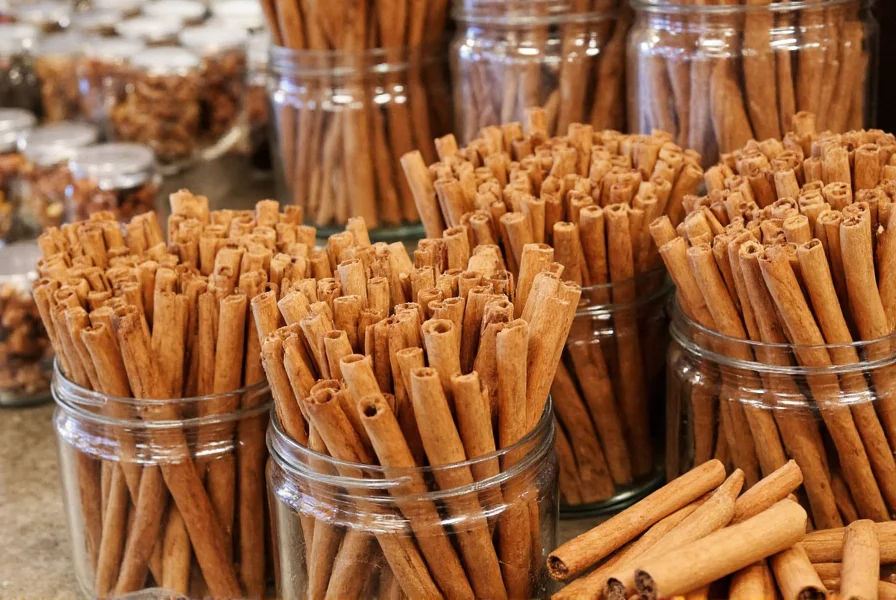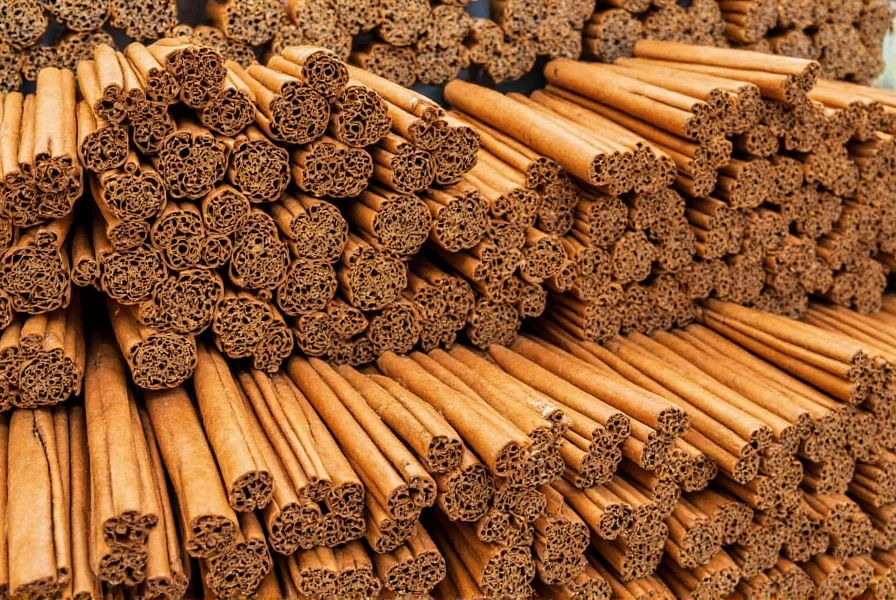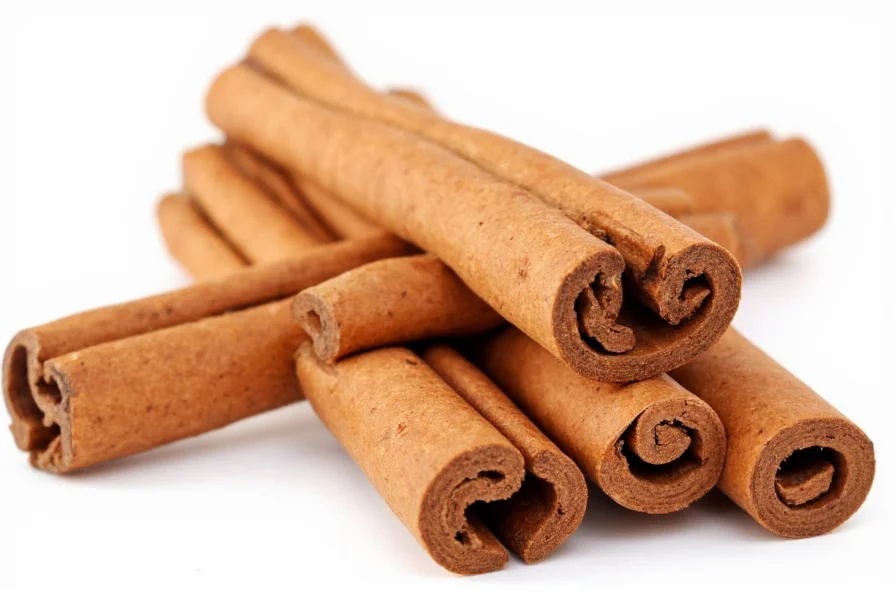When searching for where to buy cinnamon sticks, you'll discover numerous options both online and in physical stores. Cinnamon sticks, also known as cinnamon quills, offer superior flavor retention compared to ground cinnamon and are essential for many traditional recipes across various cuisines. Understanding where to find quality cinnamon sticks can significantly impact your cooking and baking results.
Major Grocery Retailers for Cinnamon Sticks
Nearly all major supermarket chains carry cinnamon sticks in their spice sections. Walmart, Kroger, Target, and Costco typically stock multiple brands including McCormick, Simply Organic, and their store brands. When purchasing from these locations, check the expiration dates and look for tightly rolled sticks with minimal breakage. Most standard grocery stores keep cinnamon sticks in the spice aisle alongside other baking ingredients and dried herbs.

Specialty Food Markets and Health Food Stores
For higher quality cinnamon sticks, specialty food markets often provide better options. Whole Foods Market, Sprouts Farmers Market, and World Market typically offer organic cinnamon sticks and sometimes carry both Cassia and Ceylon varieties. These stores usually have bulk spice sections where you can purchase cinnamon sticks by weight, allowing you to buy exactly what you need while ensuring freshness.
Local health food stores and co-ops frequently source directly from specialty spice suppliers, providing cinnamon sticks with verified origins. These establishments often carry Fair Trade certified options and can provide information about the cinnamon's source region, which affects both flavor profile and coumarin content.
Online Retailers for Cinnamon Sticks
When considering where to buy cinnamon sticks online, several reliable options exist. Amazon offers numerous cinnamon stick varieties with customer reviews that help verify quality. Specialty spice websites like Penzeys Spices, The Spice House, and Mountain Rose Herbs provide detailed information about their cinnamon sources, including whether they offer Ceylon (true cinnamon) versus the more common Cassia variety.
| Online Retailer | Cinnamon Type | Price Range (per ounce) | Special Features |
|---|---|---|---|
| Penzeys Spices | Ceylon & Cassia | $2.50-$4.00 | Free shipping over $50, detailed origin information |
| The Spice House | Ceylon & Cassia | $2.75-$4.25 | Family-owned since 1957, bulk options |
| Amazon | Primarily Cassia | $1.50-$3.00 | Prime shipping, various brands |
| Mountain Rose Herbs | Ceylon & Cassia | $2.25-$3.75 | Organic certified, sustainable sourcing |
Ethnic Grocery Stores for Authentic Cinnamon Sticks
For those seeking where to buy cinnamon sticks for specific regional cuisines, ethnic grocery stores often provide the most authentic options. Indian, Middle Eastern, and Southeast Asian markets typically carry high-quality cinnamon sticks used in traditional cooking. These stores often sell cinnamon in larger quantities at better prices than mainstream supermarkets.
In Indian markets, look for "dalchini" which usually refers to Ceylon cinnamon. Middle Eastern markets often carry both Ceylon and Cassia varieties, with Ceylon being preferred for desserts and Cassia for savory dishes. The cinnamon sticks in these stores are frequently fresher and less processed than those found in conventional grocery chains.

Factors to Consider When Purchasing Cinnamon Sticks
When determining where to buy cinnamon sticks, consider these important factors:
- Cinnamon Type: Ceylon cinnamon (true cinnamon) has a delicate flavor and lower coumarin content, while Cassia is stronger and more common in US markets
- Quality Indicators: Look for tightly rolled sticks with multiple layers, uniform color, and a strong aroma
- Organic Certification: Especially important for cinnamon due to potential pesticide use in conventional farming
- Price Points: Premium Ceylon cinnamon typically costs 2-3 times more than Cassia varieties
- Storage Conditions: Properly stored cinnamon sticks maintain quality for 1-2 years
Proper Storage of Cinnamon Sticks
After purchasing cinnamon sticks from your preferred source, proper storage ensures maximum shelf life. Keep cinnamon sticks in airtight containers away from direct sunlight and heat sources. Unlike ground cinnamon, whole sticks retain their flavor and aroma significantly longer—typically 1-2 years when stored properly. Avoid storing near strong-smelling foods as cinnamon can absorb odors.
Finding Local Sources for Cinnamon Sticks
To discover where to buy cinnamon sticks near me, try these approaches:
- Search "spice store near me" or "ethnic grocery store near me" in your preferred search engine
- Check local farmers' markets, especially those with international food vendors
- Ask at specialty tea shops, as many carry complementary spices
- Visit local cooking schools or culinary supply stores that often sell quality ingredients
Frequently Asked Questions
Where can I find Ceylon cinnamon sticks specifically?
Ceylon cinnamon sticks are available at specialty spice retailers like Penzeys Spices and The Spice House, both online and in their physical stores. Ethnic grocery stores specializing in South Asian products often carry authentic Ceylon cinnamon. When purchasing online, look for products specifically labeled as 'Ceylon' or 'true cinnamon' as most standard grocery stores stock Cassia cinnamon by default.
Are cinnamon sticks worth buying instead of ground cinnamon?
Yes, cinnamon sticks generally offer superior flavor and longer shelf life compared to ground cinnamon. The essential oils remain better preserved in whole sticks, providing more complex flavor when used in cooking. Cinnamon sticks are particularly valuable for infusing flavors into liquids like syrups, teas, and stews. You can also grind sticks yourself for fresh ground cinnamon when needed.
How can I tell if cinnamon sticks are fresh and high quality?
Fresh, high-quality cinnamon sticks should be tightly rolled with multiple concentric layers, have a uniform reddish-brown color, and emit a strong, sweet aroma when broken. They should feel hard and brittle, snapping cleanly rather than bending. Avoid sticks that appear dusty, have visible mold, or feel soft and moist, as these indicate age or improper storage.
What's the difference between Ceylon and Cassia cinnamon sticks?
Ceylon cinnamon (true cinnamon) comes from Sri Lanka and has multiple thin, delicate layers that form a tight scroll. It has a lighter color, sweeter flavor, and lower coumarin content. Cassia cinnamon, more common in US markets, comes from China and has a single thick layer, darker color, stronger flavor, and higher coumarin levels. Ceylon is preferred for desserts while Cassia works better in savory dishes requiring stronger flavor.
How should I store cinnamon sticks to maintain freshness?
Store cinnamon sticks in an airtight container away from direct sunlight, heat, and moisture. A cool, dark cupboard works well for most homes. Properly stored, cinnamon sticks maintain their flavor and aroma for 1-2 years. Avoid storing near strong-smelling foods as cinnamon can absorb odors. For longest shelf life, consider dividing large quantities into smaller portions to minimize air exposure when accessing the spice.











 浙公网安备
33010002000092号
浙公网安备
33010002000092号 浙B2-20120091-4
浙B2-20120091-4